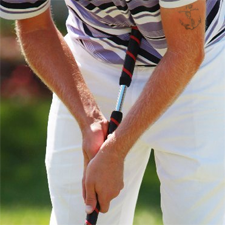It is widely known that the USGA and R&A are currently re-evaluating the use of “anchored” clubs–specifically, the “long” or “belly” putter. The USGA has indicated that they will make an announcement this year on the future allowance of such clubs under the Rules of Golf. With the PGA Tour season winding down one would assume that this announcement is likely to occur after the Tour Championship and the Ryder Cup. In the meantime, this topic continues to be ripe for speculation. As rules questions go, this one is particularly challenging and cuts to the very foundation of the rules that govern the game.
The Rules of Golf define the game. Without the Rules, golf simply ceases to exist. To punctuate this point what would happen if there was no rule defining the teeing ground? Wouldn’t it follow that a golfer could simply “tee off” on the lip of the hole and score 18 every time? Like them or not, the Rules of Golf provide the linguistic foundation on which we play the game. As for anchoring, the rules provide very little guidance. The rules simply state, “The ball must be fairly struck at with the head of the club and must not be pushed, scraped or spooned.” That’s it. This lack of specificity provided the opening through which anchored technology developed. What started as a crutch for a small number of emotionally bankrupt head cases has now become the preferred method of putting for a growing number of the game’s best players including three of the last five major winners. This trend is certainly deserving of attention, however, here are just a few of the challenges that this question presents:
1) How would a rule that prohibits “anchoring” be written? Assuming the USGA and R&A agree that golf was not intended to be played with the club tucked against the body, how would the rules be written to prevent it? I recently played with a player who “anchored” his left arm against his body while putting with a longer putter but no part of the club touched his torso. Would this be allowed? What about one of the game’s greatest putters of all time, Billy Casper, who “anchored” his left hand on his left thigh? Writing this rule would not be easy.
2) What happens if the PGA Tour doesn’t support the change? One of the most important tenets of the Rules of Golf is that there is only one Rule book. Whether you play on the PGA Tour, or in a Tuesday Night Twilight League, the same rules govern play. Do you think Webb Simpson, Keegan Bradley, Ernie Els and Vijay Singh (just to name a few) will quietly accept a change that would pose a serious threat to their livelihood or do you think they might encourage their tour to take the unprecedented step of creating a separate set of rules to govern their tournaments?
3) What happens if the weekend warriors who love golf and who use an anchored technique don’t support the change? Do you think they will give up the club (or as some concerned golf proponents argue, the game itself) or do you think they will simply continue to use these clubs and add it to the list of rules they choose to ignore?
Personally, I do not feel that the anchored putter poses a major threat to the game as we know it. Experience tells me that the greatest strength of the anchored technique is also its greatest weakness–it neutralizes the hands. In my view the best putters in the world will always be those with a deft touch, and that comes only with soft hands and instinctive feel. That doesn’t come when you “drop anchor!”


